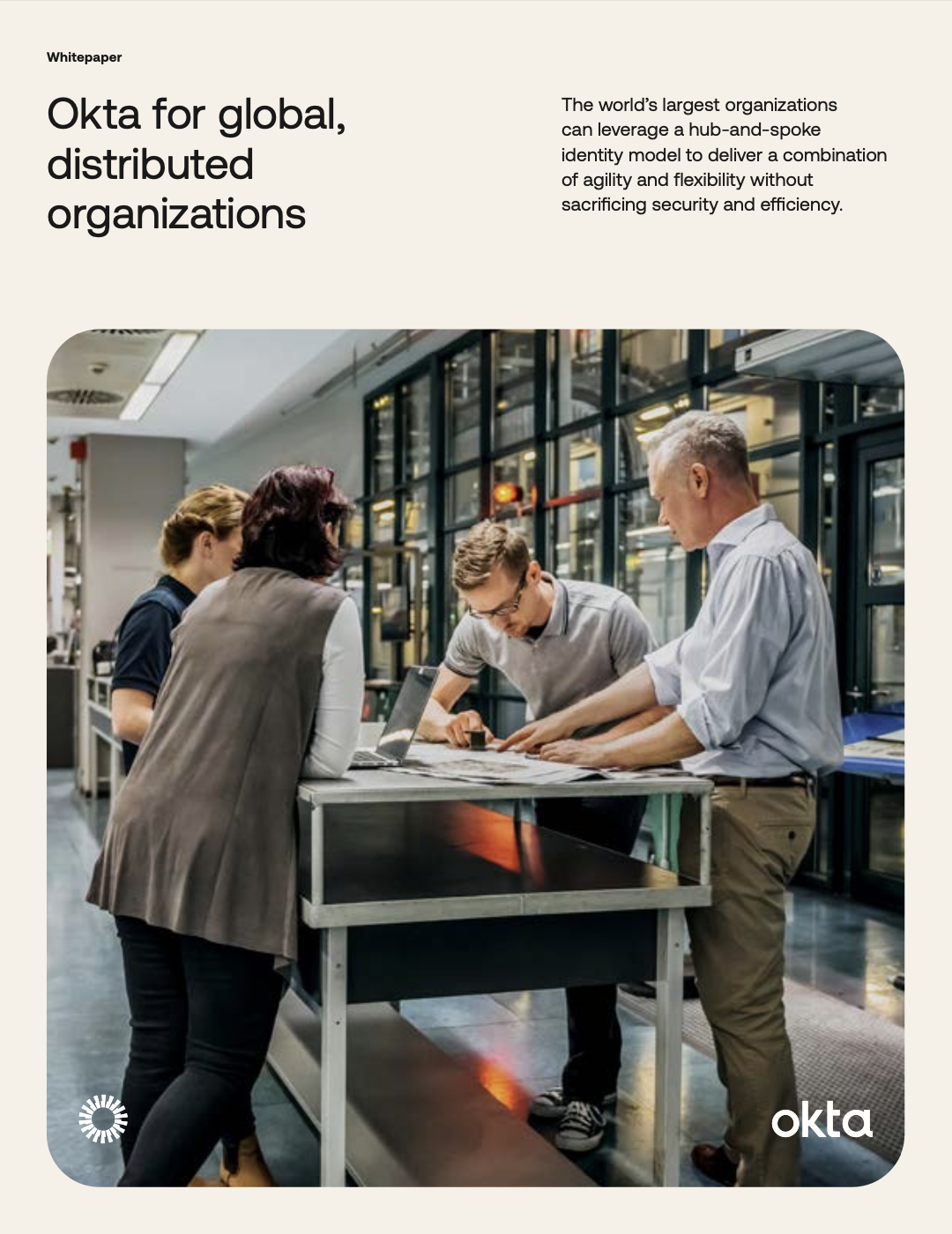Okta for global, distributed organizations
For large, complex organizations, centralizing aspects of identity can be extremely challenging. Business units, subsidiaries, and regional offices often operate independently, making their own decisions and managing their own technology and user bases. Multinational organizations must adhere to regulatory requirements related to data residency, and organizations looking to augment their capabilities for either the short term (i.e. seasonally) or for the long term (including M&A) have challenges centralizing identities originating from outside of their organization.
In this paper, we’ll break down how Okta for Global 2000’s ‘hub and spoke’ identity model can serve as the foundation for unified services across an entire organization, while allowing for specific application flexibility across distributed information technology (IT) organizations. We’ll also review a few example use cases for how this hub and spoke model can be leveraged by the world’s largest organizations to deliver a combination of agility and flexibility without sacrificing security and efficiency
